5. Laurence Anyways (2012)
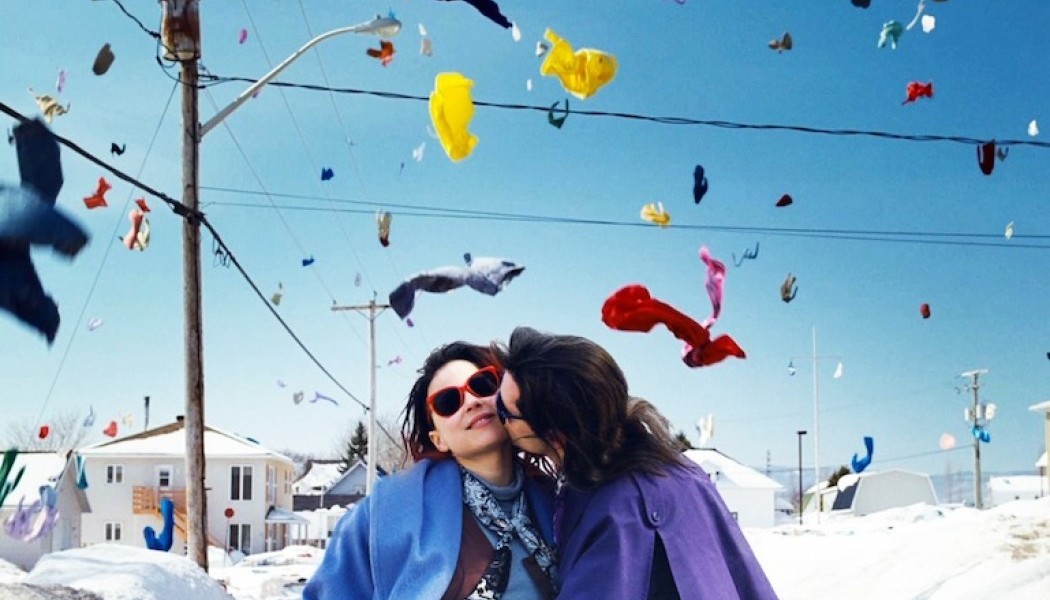
One of the youngest and most promising new directors in the spotlight is Xavier Dolan, a Canadian filmmaker whose semi-autobiographical debut “I Killed My Mother” (written, directed, produced and starring him) premiered in 2009 in Cannes to an eight-minute standing ovation. At only 27, he has since then directed six more feature films. As an out gay man, he’s become one of the reigning voices in queer cinema in this century, with most of his films approaching different LGBT themes.
While the rest of his body of work deserves enough praise, and his most well-known portrayals of homosexuality are more naturally crafted and real, he made “Laurence Anyways”, a colorful experience in displaying the relationship between a transgender woman and her long-time girlfriend Fred (Suzanne Clément) during the ‘90s.
Dolan does more than focus on the transgender issue and instead aims to find the ways in which such a life-changing time affects a romantic relationship. It lingers on the thought of how real love is, against the thought of loving someone for the gender they were assigned at birth. Transphobia lurks in the shadows for the duration of the film because Laurence wishes only to live her life as ordinarily happy as possible.
Dolan is prone to surreal aesthetic choices, making it vivacious and lavish with over-saturated colors, throwing pop songs and slow-motion in the mix. What seems theatrical quickly turns darker, as does the relationship between Laurence and Fred. The director broke barriers in this film almost without attempting to do so, and it is a tender exercise to make people see this subject through different eyes – normal eyes.
4. Tangerine (2015)
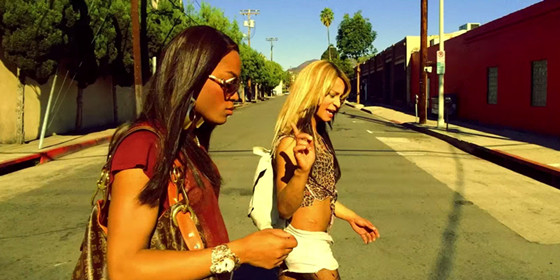
One of the reasons that “Tangerine” has earned so much acclaim was the fact that it was shot with three iPhone 5s smartphones by the director Sean S.Baker and D.P. Radium Cheung, due to budgets constraints.
If that weren’t enough, the story follows a transgender sex worker who finds her boyfriend/pimp has been cheating on her after 28 days in prison. Sin-Dee Rella meets her friend Alexandra, another trans sex worker, in Hollywood on Christmas Eve and this first-rate buddy-comedy starts.
At first, the film was supposed to carry a more serious tone, but that was altered thanks to the extensive research conducted with the lead actresses and a lot of other people from the same neighborhood, including women who actually worked the corner. Baker admitted in interviews that many scenes were reenacted for the film, after stories and anecdotes the filmmakers heard.
There’s a great number of details and flashes of brilliance in the script and, while the technical effort was extraordinary to the point one would hardly remember they’re watching something shot on an iPhone, the accuracy in telling the story and the actors’ contribution gave it huge pop-culture potential and made it even more special.
Baker sees its colored-transgender spectrum as a part of the characters’ lives as sex workers. While the film exposes their full identities (more so in the final scene), this is still a screwball comedy with an incredible soundtrack and a delirious energy that can catch you off-guard you with its truthfulness.
3. Weekend (2011)
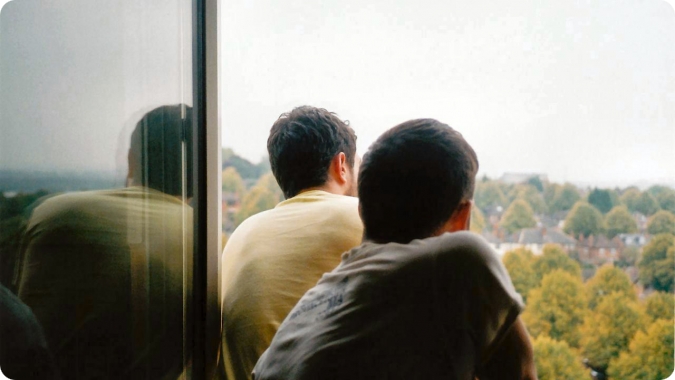
Out director Andrew Haigh’s debut “Greek Pete” premiered at the London Lesbian and Gay Film Festival, but his second feature “Weekend” premiered at SXSW Film Festival to even higher acclaim. His choice to tell more stories about gay men led him to the plot of “Weekend,” where two men fall in love over the course of 48 hours.
After attending a house party, Russell (Tom Cullen) leaves to visit a gay club where he meets Glen (Chris New), a student artist, and they head to Russell’s apartment to have sex.
The story develops over the weekend, as Glen asks Russell to speak to a voice recorder about their night together – for an art project. They exchange numbers eventually, and Glen leaves. They meet again the next day, and this time, they’re more intrigued with one another, getting to know each other better and sharing intimate issues. Their relationship evolves into bigger revelations, and Glen mentions his plans to move to Oregon the next day for a two-year art course.
The film presents its political side approaching the end, discussing heteronormativity and the fight for gay marriage. Russell has yet to fully come out, and Glen allows him to do it. While the ending isn’t a fairy tale one, it’s undeniable that their story and that weekend altered these characters’ points of views, and its rawness was a representation of how unforgettable such an experience with another person could be. On a low budget, with incredible cinematography, this is an outstanding film.
2. Carol (2015)
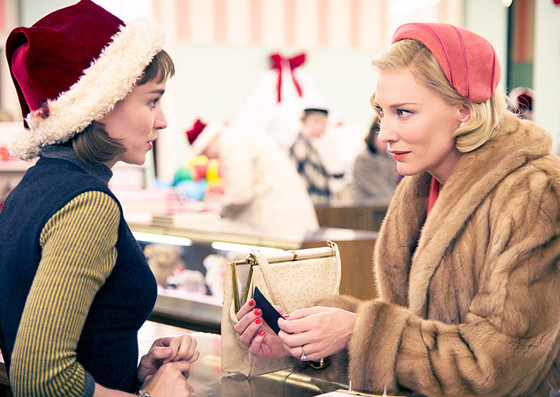
Director Todd Haynes is considered a pioneer in New Queer Cinema, a movement that first appeared in the early ‘90s. His debut, “Poison” (1991) explored the subject of AIDS, and since then he’s worked on several distinguished features regarding queer culture. In 2015, he hit with full force thanks to “Carol,” adapting Patricia Highsmith’s novel “The Price of Salt.”
Set in New York City in the early 1950s, it stars Cate Blanchett and Rooney Mara as the main characters in a forbidden love affair between a young photographer and an older woman. Carol (Blanchett) is going through a difficult divorce when she meets Therese, a temporary shopgirl working in a department store during Christmas season. Therese has a boyfriend but grows closer to Carol as they become acquainted and start seeing each other frequently.
The stress of Carol’s divorce reaches the point that her husband is petitioning the judge to take a “morality clause” against her due to her homosexuality just to gain custody of their daughter, which makes Carol want to get away for a while and invite Therese to go with her on a road trip. Upon this, Therese’s boyfriend confronts her and realizes she has feelings for Carol.
What follows is Therese’s and Carol’s affair and the troubles that come with it. While Highsmith’s original novel was truly groundbreaking, Haynes made the perfect screen adaptation.
With all around amazing performances, costumes, score and Edward Lachman’s breathtaking cinematography, it’s quite easy to understand why its premiere received a 10-minute standing ovation at Cannes in 2015. Its universal acclaim and the number of times it was named the best film of the year is exactly the kind of attention such a wonderful LGBT-themed film needs.
1. Blue is the Warmest Color (2013)
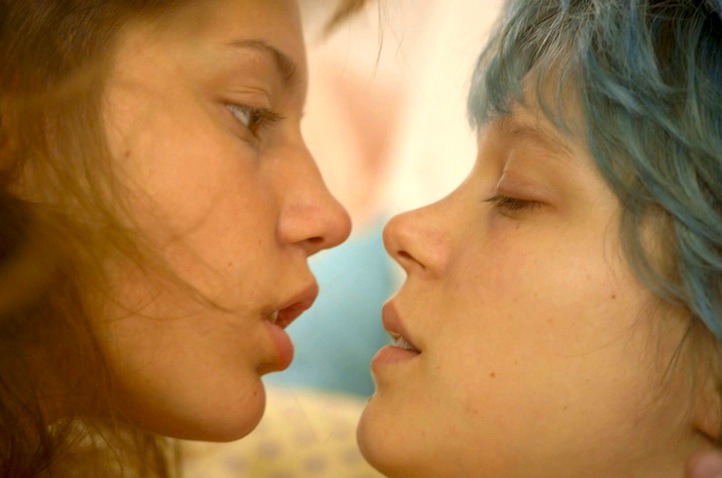
Abdellatif Kechiche wrote, produced and directed this adaptation of a 2010 French graphic novel by Julie Maroh of the same name, generating controversy upon its Cannes premiere. No matter how raw its depiction of sexuality was, it remains one of the most relevant and powerful portrayals of first love in this century.
The main character, Adèle (Adèle Exarchopoulos), bumps into artsy blue-haired Emma (Léa Seydoux), and they later become acquainted. Adèle takes her time exploring her sexuality, experimenting with a boyfriend and then flirting with a girl, but Emma isn’t as much related to the point of Adèle’s sexuality as those before her. They fall into an obsessive relationship, passionate and enthralling.
It’s not always easy, and years pass by them with a growing physical and emotional distance, followed by cheating and violence. Adèle’s sexuality isn’t the most definitive thing about her, but her love for Emma could be.
When one discusses LGBTQ+ stories in film, it’s important that they’re good, strong stories that best represent different lives, but it matters if they’re also real and honest ones – just as good or better than heterosexual ones. This sort of tale has been done many times before on all sides, but “Blue” is something else. If it weren’t for the many details (especially in terms of colors), this could very well be a documentary, and the sterling work by the actresses was one for the ages.
Author Bio: Alexandra Gandra is a Portuguese writer and filmmaker. She currently finished a master’s degree in Digital Audiovisual at the University of Aveiro. She spends too much time in cafés people-watching and putting sentences together, some of which can be found at medium.com/@gandra. She’s also writing a book she hopes to finish some day.